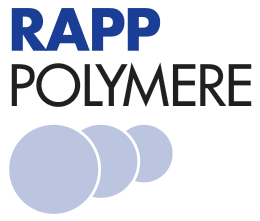€ 496,00*
133000-65-32.500MG
Product information
This PEG linker with a maleimide endgroup is applied in sulfhydryl-selective coupling of PEG to proteins and other thiol substrates and for selective scavenging of thiol containing peptides. The maleimide group reacts at about neutral pH with free thiols via a Michael addition to form a stable thioether bond. Carboxy PEGs may be used for conjugation to amine substrates (forming amides) or other nucleophiles (forming esters). However, activation is necessary prior to conjugation. Different PEG carboxy derivatives display a different degree of stability and reactivity of the corresponding active ester. The butyric acid endgroup is directly connected to the PEG chain via a very stable ether linkage. After activation it is used to conjugate the PEG derivative to nucleophilic substrates, mainly amines (to form amides) or hydroxyls/thiols (forming esters). PEG butyric acid active esters are one of the most hydrolytically stable PEG active esters. They can be used for pegylation in aqueous media without the need of a large excess of PEG.
Literature
L 95 α-Maleinimido-ω-Carboxy PEGs
- Chen, G.; Wang, L.; Cordie, T.; Vokoun, C.; Eliceiri, K. W.; Gong, S. Multi-Functional Self-Fluorescent Unimolecular Micelles for Tumor-Targeted Drug Delivery and Bioimaging. Biomaterials 2015, 47, 41-50. doi: 10.1016/j.biomaterials.2015.01.006
- Guo, J.; Hong, H.; Chen, G.; Shi, S.; Zheng, Q.; Zhang, Y.; Theuer, C. P.; Barnhart, T. E.; Cai, W.; Gong, S. Image-Guided and Tumor-Targeted Drug Delivery with Radiolabeled Unimolecular Micelles. Biomaterials 2013, 34 (33), 8323-8332. doi: 10.1016/j.biomaterials.2013.07.085
- Han, L.; Li, J.; Huang, S.; Huang, R.; Liu, S.; Hu, X.; Yi, P.; Shan, D.; Wang, X.; Lei, H.; Jiang, C. Peptide-Conjugated Polyamidoamine Dendrimer as a Nanoscale Tumor-Targeted T1 Magnetic Resonance Imaging Contrast Agent. Biomaterials 2011, 32 (11), 2989-2998. doi: 10.1016/j.biomaterials.2011.01.005
- Guo, J.; Hong, H.; Chen, G.; Shi, S.; Nayak, T. R.; Theuer, C. P.; Barnhart, T. E.; Cai, W.; Gong, S. Theranostic Unimolecular Micelles Based on Brush-Shaped Amphiphilic Block Copolymers for Tumor-Targeted Drug Delivery and Positron Emission Tomography Imaging. ACS Appl. Mater. Interfaces 2014, 6 (24), 21769-21779. doi: 10.1021/am5002585
- Wu, H.; Li, J.; Zhang, Q.; Yan, X.; Guo, L.; Gao, X.; Qiu, M.; Jiang, X.; Lai, R.; Chen, H. A Novel Small Odorranalectin-Bearing Cubosomes: Preparation, Brain Delivery and Pharmacodynamic Study on Amyloid-Β₂₅₋₃₅-Treated Rats Following Intranasal Administration. Eur. J. Pharm. Biopharm. 2012, 80 (2), 368-378. doi: 10.1016/j.ejpb.2011.10.012
- Brinkman, A. M.; Chen, G.; Wang, Y.; Hedman, C. J.; Sherer, N. M.; Havighurst, T. C.; Gong, S.; Xu, W. Aminoflavone-Loaded EGFR-Targeted Unimolecular Micelle Nanoparticles Exhibit Anti-Cancer Effects in Triple Negative Breast Cancer. Biomaterials 2016, 101, 20-31. doi: 10.1016/j.biomaterials.2016.05.041
- McCarthy, J. R.; Sazonova, I. Y.; Erdem, S. S.; Hara, T.; Thompson, B. D.; Patel, P.; Botnaru, I.; Lin, C. P.; Reed, G. L.; Weissleder, R.; Jaffer, F. A. Multifunctional Nanoagent for Thrombus-Targeted Fibrinolytic Therapy. Nanomedicine (Lond.) 2012, 7 (7), 1017-1028. doi: 10.2217/nnm.11.179
- Huo, H.; Gao, Y.; Wang, Y.; Zhang, J.; Wang, Z.-Y.; Jiang, T.; Wang, S. Polyion Complex Micelles Composed of Pegylated Polyasparthydrazide Derivatives for SiRNA Delivery to the Brain. J. Colloid Interface Sci. 2015, 447, 8-15. doi: 10.1016/j.jcis.2015.01.043
- Chandrawati, R.; Chong, S.-F.; Zelikin, A. N.; Hosta-Rigau, L.; Städler, B.; Caruso, F. Degradation of liposomal subcompartments in PEGylated capsosomes. Soft Matter 2011, 7 (20), 9638-9646. doi: 10.1039/c1sm05623a
- Seo, J. H.; Chen, L.-J.; Verkhoturov, S. V.; Schweikert, E. A.; Revzin, A. The Use of Glass Substrates with Bi-Functional Silanes for Designing Micropatterned Cell-Secreted Cytokine Immunoassays. Biomaterials 2011, 32 (23), 5478-5488. doi: 10.1016/j.biomaterials.2011.04.026

